Talking about best practices in Kanban is a bit of a controversial topic. Why? You might ask. Well, because Kanban is not a framework and therefore there isn't a single best way to do it.
Instead, you start with what you do now and then gradually evolve. Every team is different, so their application of Kanban will be different too.
Drawing upon our own experience though, we decided to share some of the tricks that help us reap the full rewards of having a Kanban system.
Organize Team Work with Swimlanes
When first building their workflow, teams usually apply an individual swimlane for every team member. This is a great starting point; however, a problem arises when you continue with that approach for too long. Especially in the case of a larger team, such Kanban board structure will resemble an Excel table with endless rows.
As a result, you won't be able to realize the real implication of the swimlanes - better teamwork organization. 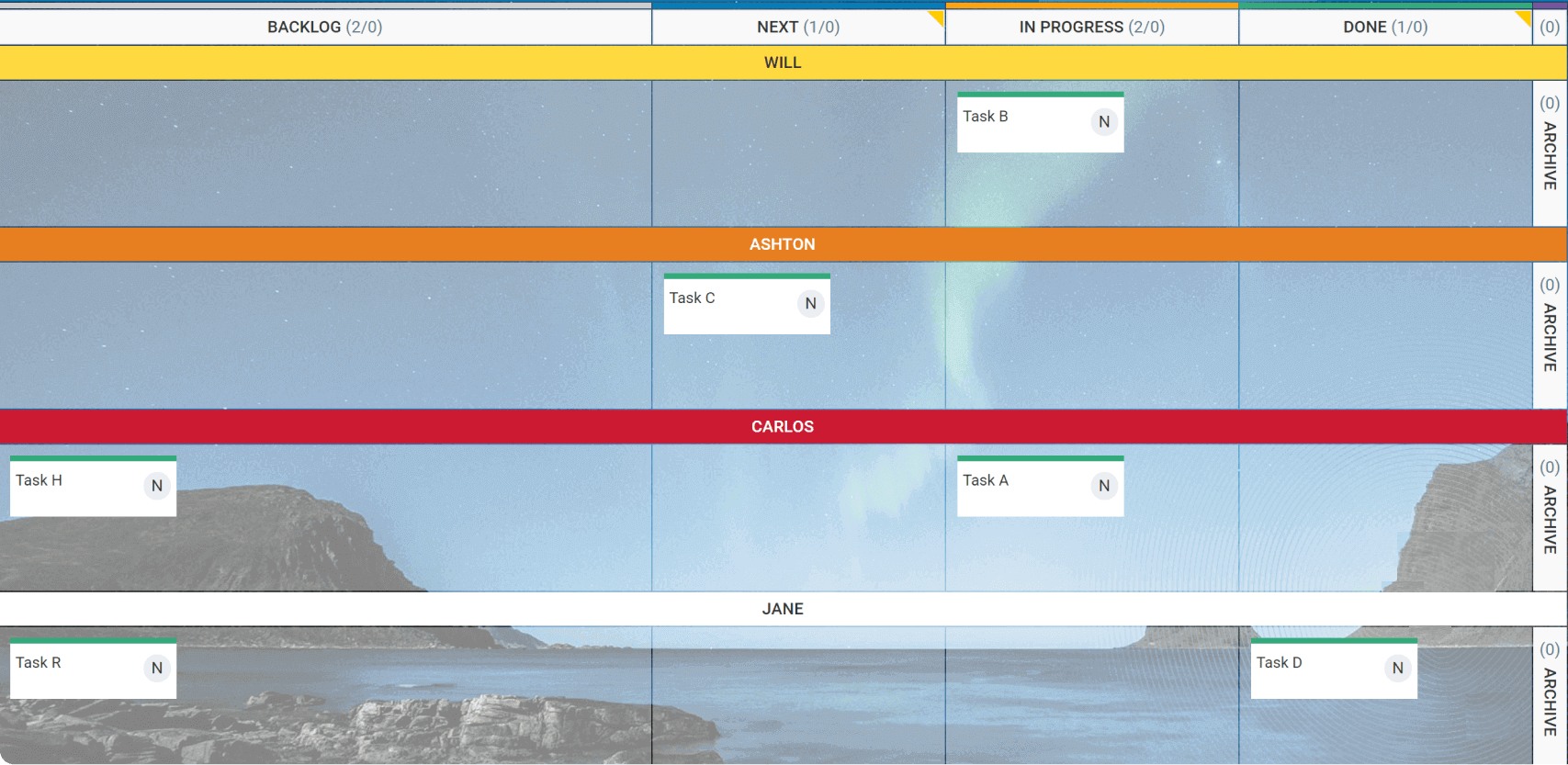 That's why the next step in your Kanban maturity should be to introduce Kanban swimlanes based on different types of work or classes of service. The best practice here is to paint your swimlanes in different colors, so you can better distinguish urgent tasks (Expedite) from the normal ones.
That's why the next step in your Kanban maturity should be to introduce Kanban swimlanes based on different types of work or classes of service. The best practice here is to paint your swimlanes in different colors, so you can better distinguish urgent tasks (Expedite) from the normal ones. 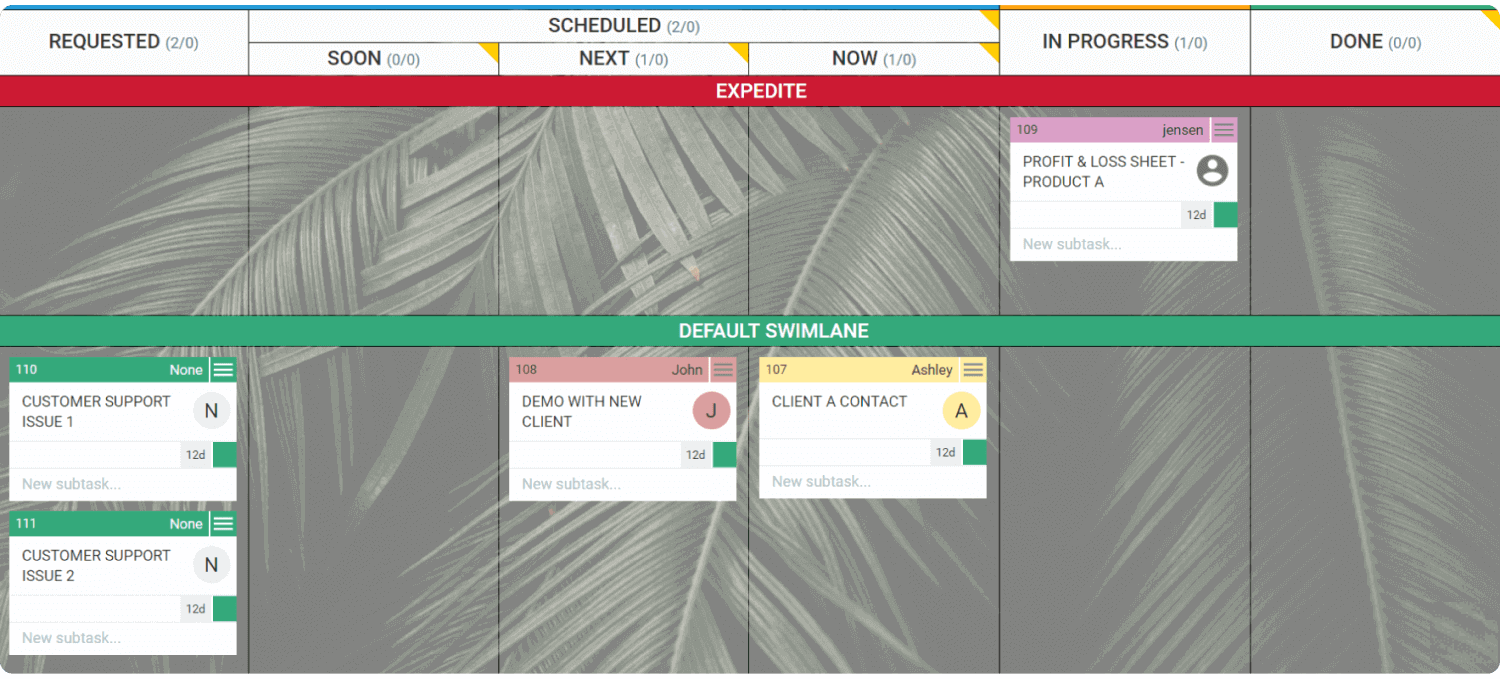 You should also use some visual representation (a letter of the alphabet or an avatar) of the person who has committed to complete a specific task. This way, you will be able to declutter your board further and encourage more collaboration inside your team.
You should also use some visual representation (a letter of the alphabet or an avatar) of the person who has committed to complete a specific task. This way, you will be able to declutter your board further and encourage more collaboration inside your team.
Evolving Swimlanes with Multiple Workflows
When advancing your Kanban board and evolving your work process, you can also look to introduce Multiple Workflows. This is a feature that we use in Businessmap to separate the different work activities (or even projects) of our cross-functional teams on one Kanban board. As a result, we don't have to switch between multiple boards, which keeps our focus on the most important work at hand. 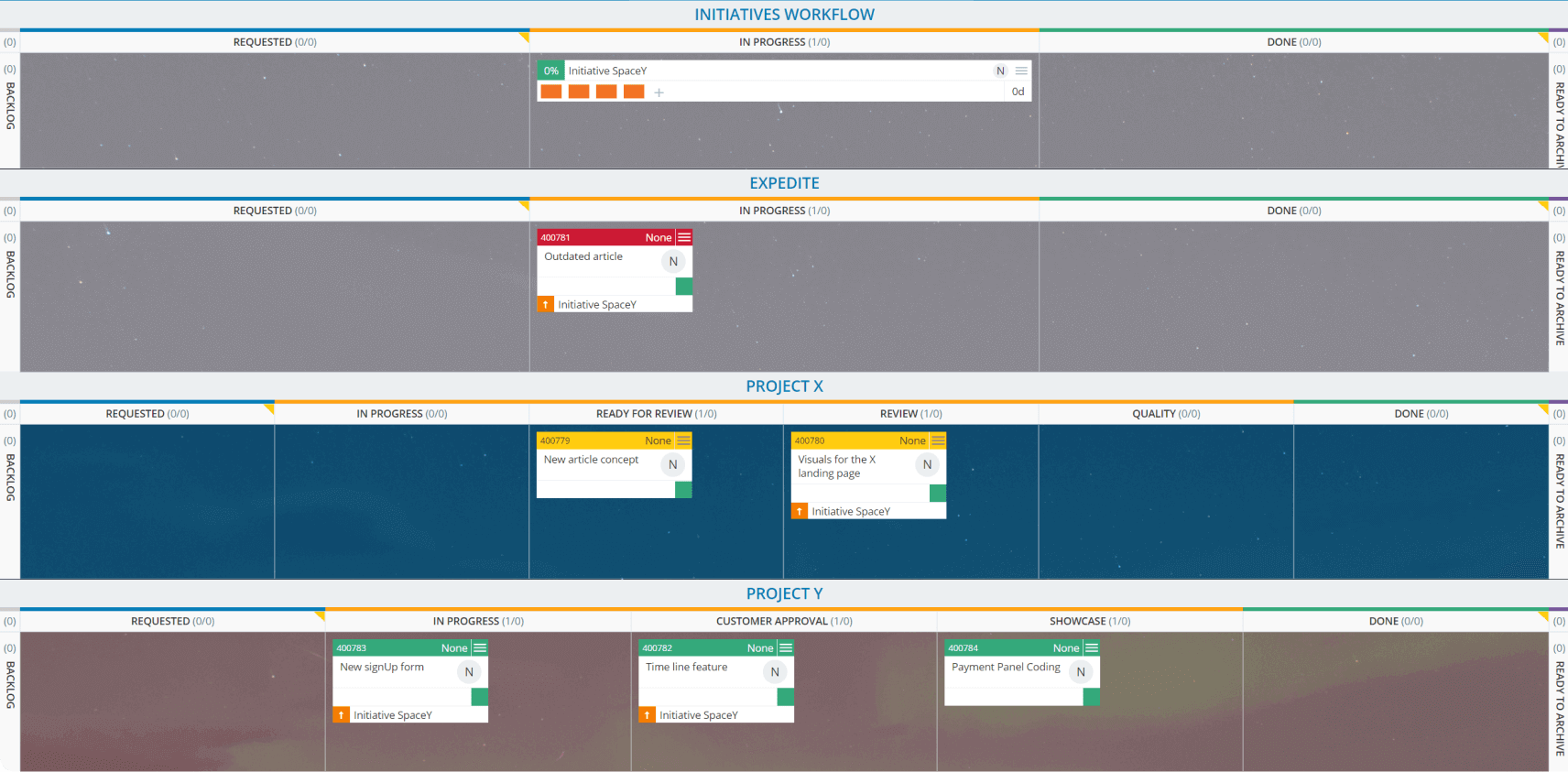
Use Activity-Based WIP Limits and CONWIP
At the beginning of their Kanban journey, teams usually start by applying per-person and team WIP limits on their entire board. Again, this is how things should be done at first. However, for more complicated work processes, you should look to introduce activity-based WIP limits as soon as possible.
As the name suggests, here you set up a separate limit for each one of the different work stages/activities, represented by a separate column on your Kanban board. 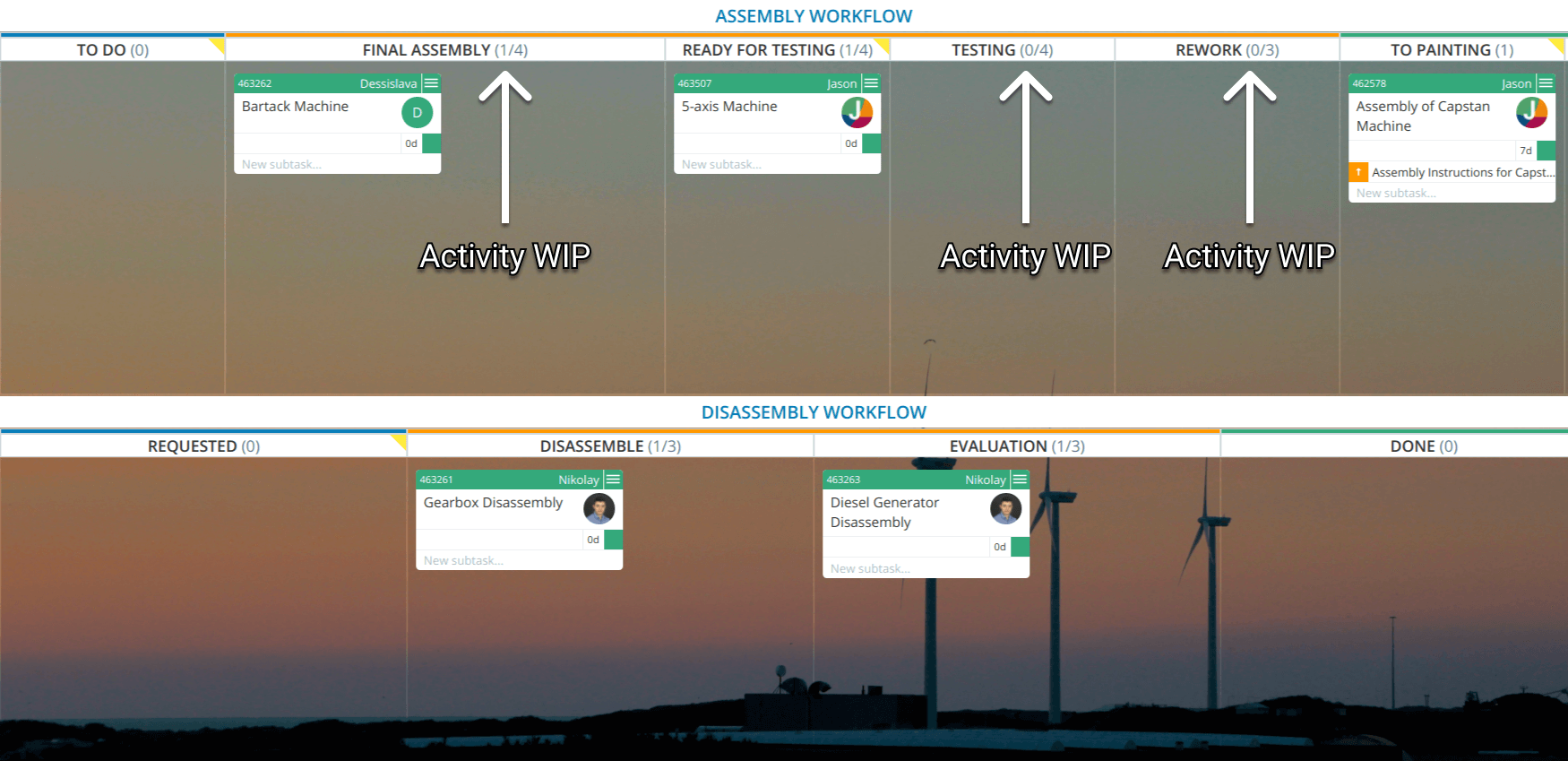 With the help of a Kanban software, you can also monitor your team's throughput in each one of the stages on the board. This data will allow you to analyze where work stays longer and identify weak spots in your workflow. To increase your throughput as well as your team's focus on getting the work done, you should look to decrease your WIP limits in the problematic stage of your process.
With the help of a Kanban software, you can also monitor your team's throughput in each one of the stages on the board. This data will allow you to analyze where work stays longer and identify weak spots in your workflow. To increase your throughput as well as your team's focus on getting the work done, you should look to decrease your WIP limits in the problematic stage of your process.
Another best practice when applying WIP limits is to introduce constant WIP (CONWIP) on emergent workflow. The goal here is to define the number of work items that can stay at any given moment in your Requested and In Progress columns altogether. This will create the means of a true pull system where your team starts working on a task only when a previous one has moved forward.
Visualize Blocked Work Items and Parking Lots
In Kanban, we apply visual signals to everything that is happening inside the workflow. That's why a best practice is to visualize work items that are blocked and cannot continue down the work process too. A reason for that blocker could be that there is an issue that needs to be resolved by another team or there is an emergent task that requires your immediate attention. 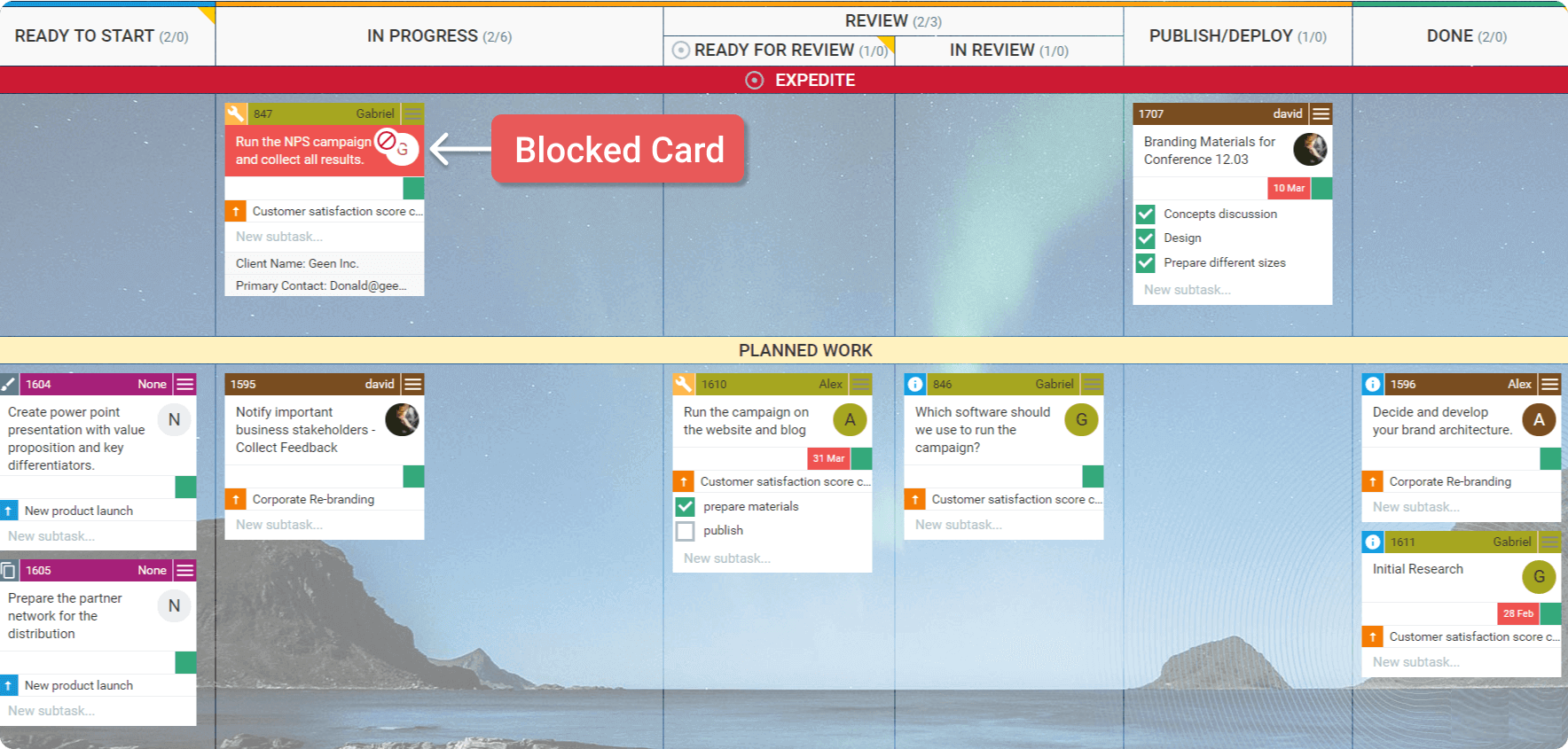 Whatever the case, you should make sure that you communicate the reason for the blocked work item on your Kanban board. This creates awareness of the issue among your team and improves the transparency of your work process.
Whatever the case, you should make sure that you communicate the reason for the blocked work item on your Kanban board. This creates awareness of the issue among your team and improves the transparency of your work process.
On top of visualizing blockers, another best practice is to visualize places in your workflow where work waits on somebody else's input (internal or external). On the Kanban board, these columns are called queues or parking lots because they don't include any value-adding activities. A good rule of thumb is to apply WIP limits to them as well, so you don't allow too many work items to pile up there. 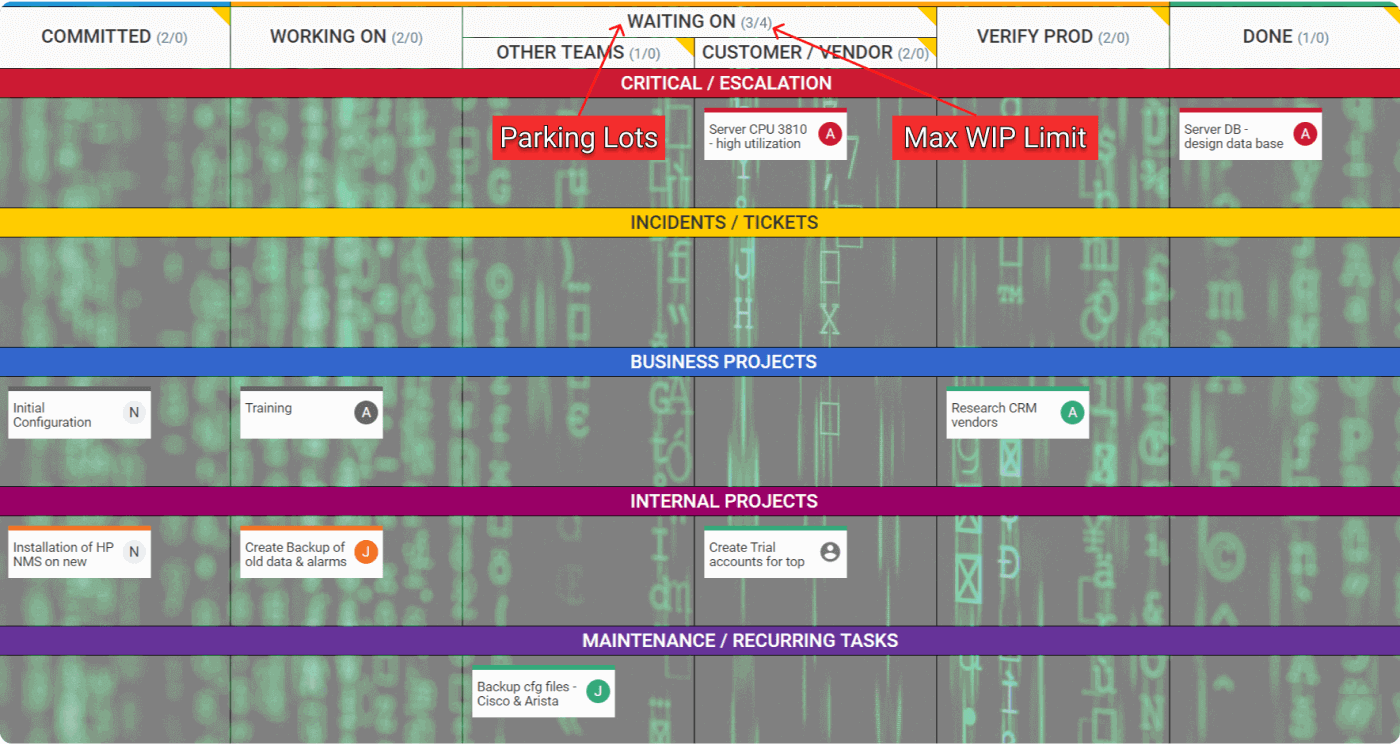
Map Discovery and Delivery Kanban
To achieve a better flow of work items, a good practice that we follow is to map Discovery and Delivery Kanban. Essentially, they represent Upstream (Discovery) and Downstream (Delivery) processes.
In the former, teams gather knowledge about a work item and refine options, while in the latter they commit to delivering it to the end-customer successfully. 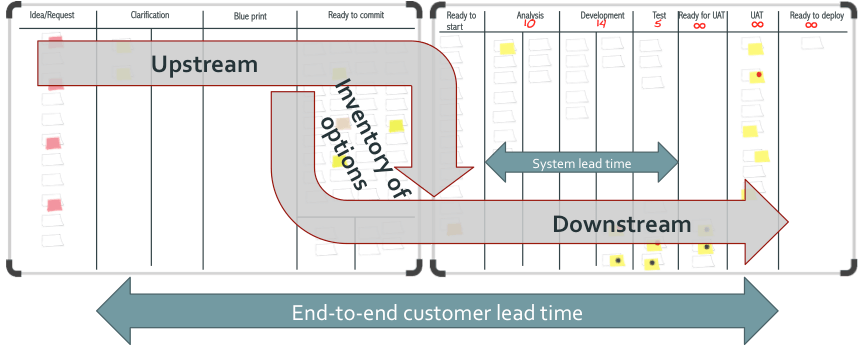 In practice, the two processes can be mapped on one Kanban board. However, if you have a more complex refinement process or there is another team responsible for it, you might decide to create two separate boards.
In practice, the two processes can be mapped on one Kanban board. However, if you have a more complex refinement process or there is another team responsible for it, you might decide to create two separate boards.
Whatever approach you pick to follow, visualizing Discovery and Delivery Kanban process will allow you to better manage the entire flow of value to your customers. You will have the means to make your work items less ambiguous and thus reduce the likelihood of abandoning them once you have already made a delivery commitment.
Visualize Process Policies
This one is directly tied to the 4th practice of Kanban - "Make process policies explicit" and it's more important than you probably think. Visualizing your process policies helps you standardize your work process and communicate with your team members exactly what is expected of them in every stage/substage.
In reality, you can do this with the help of the Kanban board. There, you can input information about what should happen with the work items below or above every Kanban column.
When doing this, a good practice to keep in mind is to also communicate the definition of done. You can explain what it means for an item in a given work stage to be considered complete in order to be pulled further downstream.
Establish Two-Phase Commitment to Manage Customer Expectations
When advancing in your Kanban maturity, another best practice is to create two-phase commitment. Apart from the Requested area, some teams establish a second, delivery commitment point down the process.
The first commitment point is essentially a team's promise to the customer to complete the work. In the latter, however, you make a commitment as to when exactly (date, time) it will be delivered to the end-customer. We should point out here that this relies heavily on the specificity of your work process and it might not be applicable to every workflow example. 
To better clarify how this works, imagine the process of a furniture retailer. When they receive an order, they usually promise a vague delivery date at first (for example 3 to 4 weeks). Then, as they get more certain in their forecast, they might send you an email or give you a call, informing you that you can expect your delivery on Thursday between 11 am and 2 pm.
This is a great way for teams to manage customer expectations. Establishing a multi-phase commitment in your process allows you to forecast with greater certainty when something will be ready for delivery so you can build a more predictable process that provides superior customer value.
Keep Track of Metrics and Improve Collaboratively
Last but not least, we recommend you to visualize your metrics and keep track of them on a regular basis.
In Businessmap, for example, every Kanban card (work item) contains information about the cycle time it has accumulated at every step of the process. We can also see how long it took it to go through our entire system (lead time) and how many tasks on average we complete on a weekly basis (throughput). All that information allows us to reflect on our work process and seek ways to continuously improve it. 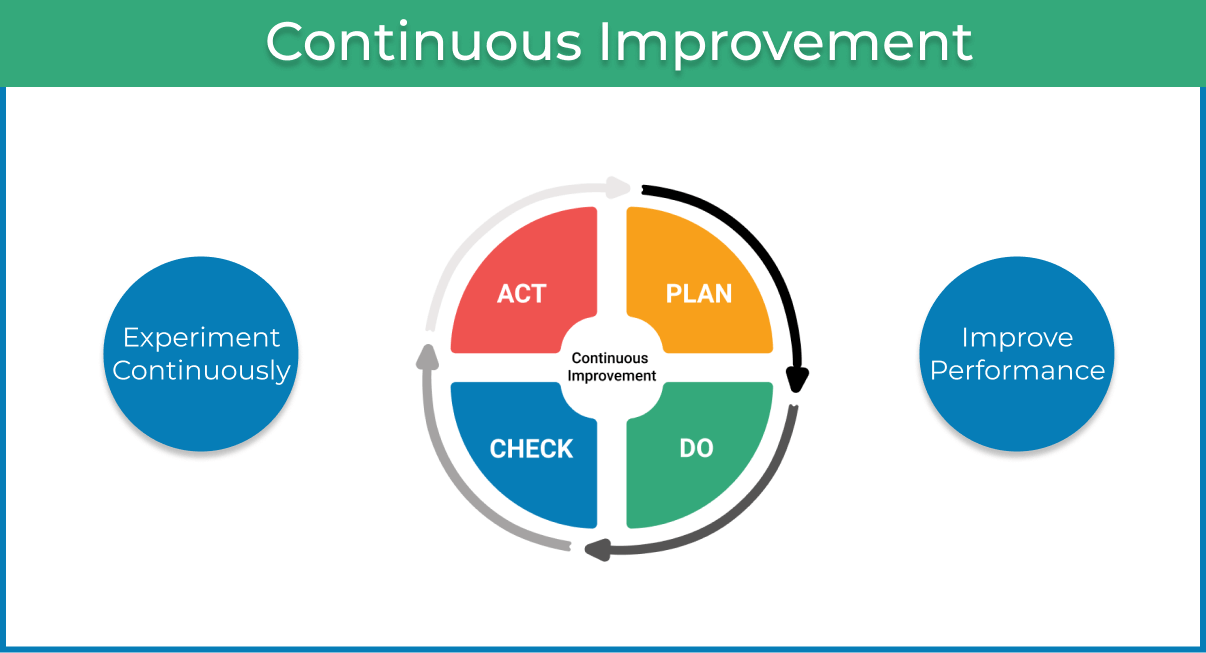 The best practice for tracking metrics is to appoint a person to be in charge of your Flow. Note that, as there are no prescribed roles in Kanban, you can give this responsibility to an already existing member of your team. Their task should be to present flow metrics at every Service Delivery Review or KPI meeting, suggest improvements for collaborative discussions and coach the team on Kanban practices (if they have enough experience to do so).
The best practice for tracking metrics is to appoint a person to be in charge of your Flow. Note that, as there are no prescribed roles in Kanban, you can give this responsibility to an already existing member of your team. Their task should be to present flow metrics at every Service Delivery Review or KPI meeting, suggest improvements for collaborative discussions and coach the team on Kanban practices (if they have enough experience to do so).
This will ensure you reflect on your workflow on a regular basis so you can take continuous improvement actions to make it more "fit for purpose".
Final Thoughts
The "best practices" discussed in this article are no guidelines. They are based on our personal experience as a company. Some of them might help you while others could be irrelevant.
That's why the most important "Kanban best practice" that you can apply now is to experiment with different techniques. See what works for you and what doesn't. Then take what you have learned and adjust your processes accordingly.
Try Businessmap Free for 14 days
Nikolay Tsonev
Product Marketing | PMI Agile | SAFe Agilist certified
Nick is a seasoned product marketer and subject matter expert at Businessmap, specializing in OKRs, strategy execution, and Lean management. Passionate about continuous improvement, he has authored numerous resources on modern-day management. As a certified PMI practitioner and SAFe Agilist, Nick frequently shares his insights at Lean/Agile conferences and management forums.



